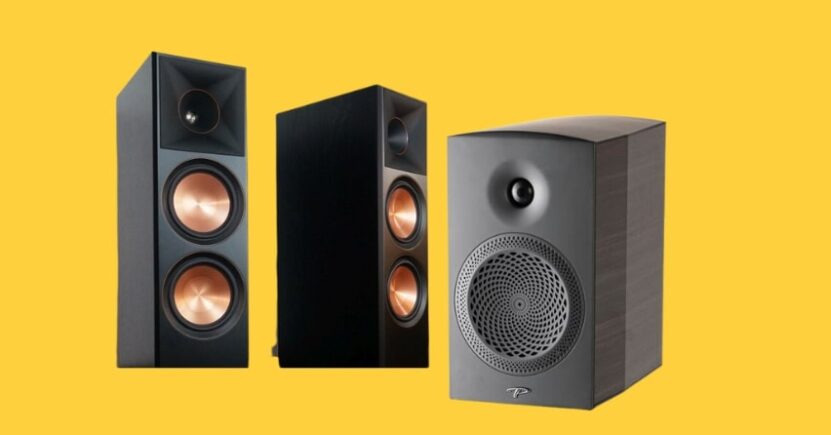Welcome to an acoustic battle between two titans in the world of sound engineering: Klipsch and Paradigm. Both brands have carved unique niches in the audio industry and are often pitched against each other by passionate audiophiles. This speaker brand comparison aims to shed light on what makes these two companies tick, how they approach design, and how they deliver superior sound quality.
Navigating the world of high-quality speakers can be intimidating for novices and experienced listeners alike. When deciding between brands such as Klipsch and Paradigm, understanding the key factors that distinguish them can be incredibly helpful.
In this comparison, we’ll dive into the history, design philosophy, and technology of both brands, as well as their sound performance, product range, pricing, customer reviews, and potential use cases.
Whether you’re building a home theater system, upgrading your music listening setup, or simply appreciating the intricate world of sound technology, this deep dive into Klipsch and Paradigm is a must-read. We’ll also highlight the pros and cons of each brand, so you can make an informed choice for your specific audio needs.
A Brief History of Both Brands
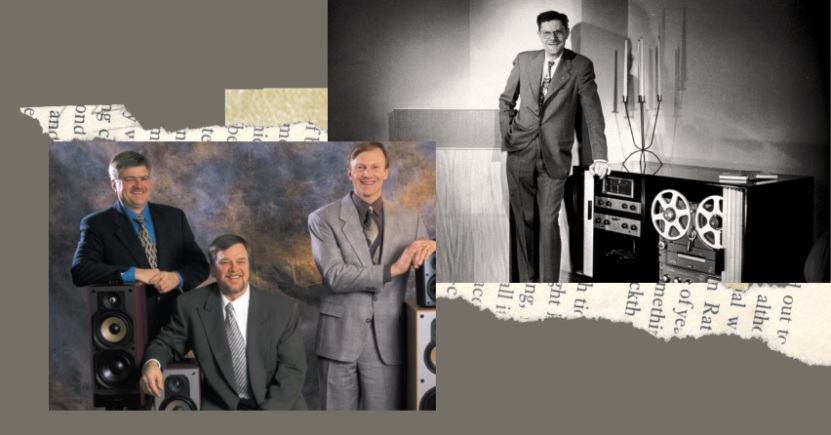
Klipsch, an American brand, was born in 1946 in a tiny tin shed in Hope, Arkansas. The founder, Paul W. Klipsch, had a unique approach to sound reproduction, hinged on corner placement and horn-loaded speakers, which has remained the company’s signature. With a legacy spanning over seven decades, Klipsch has consistently innovated, delivering high-performance speakers that embody the company’s commitment to quality sound.
On the other hand, Paradigm, a Canadian company, entered the audio industry in 1982. Co-founded by Jerry VanderMarel and Scott Bagby, Paradigm quickly became renowned for its commitment to high-quality audio and exceptional value. Through extensive research, relentless engineering, and cutting-edge innovation, Paradigm has consistently raised the bar for acoustic performance.
The stories of Klipsch and Paradigm are a testament to human ingenuity and a love for impeccable sound. Today, both companies stand as pillars in the audio industry, each with a unique philosophy and approach to creating world-class speakers that touch lives worldwide.
Design and Aesthetics
Klipsch is renowned for its retro-modern design language. Their speakers often feature a vintage aesthetic, with exposed fasteners and copper-colored drivers. However, the designs aren’t just about looks; they’re crafted to maximize sound performance. The company’s patented Tractrix Horn technology, for instance, is both visually striking and acoustically efficient.
Paradigm, in contrast, leans towards a modern and minimalist aesthetic. Their speakers often sport clean lines, sleek profiles, and sophisticated finishes. Additionally, Paradigm’s design philosophy incorporates Perforated Phase-Aligning (PPA) technology to enhance sound clarity and precision. These design choices merge to form an aesthetic that’s subtly elegant and sonically exceptional.
Klipsch offers a classic appeal, while Paradigm provides a contemporary vibe. It’s a choice between timeless tradition and modern elegance, with both options offering unique charm and functional design.
Sound Quality and Performance
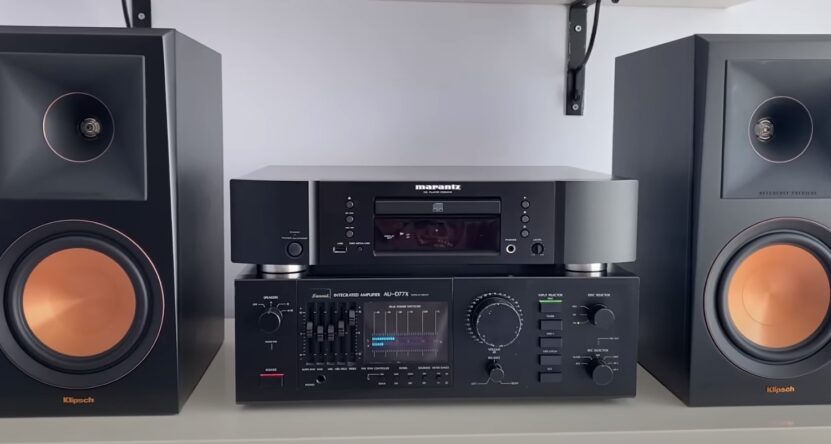
Klipsch speakers are well-known for their dynamic, lively, and engaging sound. Their horn-loaded technology results in high efficiency and directivity, allowing for a more immersive, room-filling audio experience. These speakers are great at reproducing deep bass, clear mids, and sparkling highs, making them excellent for a broad range of audio content.
Paradigm speakers, on the other hand, are lauded for their accurate and neutral sound. These speakers aim to reproduce sound exactly as it was recorded, without adding or subtracting anything. The company’s advanced driver technology, combined with innovative acoustic research, yields speakers that excel in precision and detail.
Thus, if you appreciate the raw energy and dynamic presence in your music or movies, Klipsch might be the right choice. However, if you prefer a more analytical and precise listening experience, Paradigm would be a better fit.
Speaker Technologies
Klipsch’s distinctive speaker technologies revolve around their signature horn-loaded design. This approach reduces distortion and increases efficiency, providing a more direct path from the speaker to your ears. Furthermore, Klipsch employs its Tractrix geometry and Cerametallic woofers for a more dynamic sound.
Paradigm, in comparison, utilizes its patented PPA technology to enhance speaker performance. This involves perforated driver covers that align high-frequency output for a smoother and more precise soundstage. Paradigm also uses Active Ridge Technology (ART) for improved bass response and reduced distortion.
Both brands, therefore, offer unique technological innovations designed to deliver superior sound. Your choice would depend on your preference for a specific type of sound reproduction.
Product Range and Options
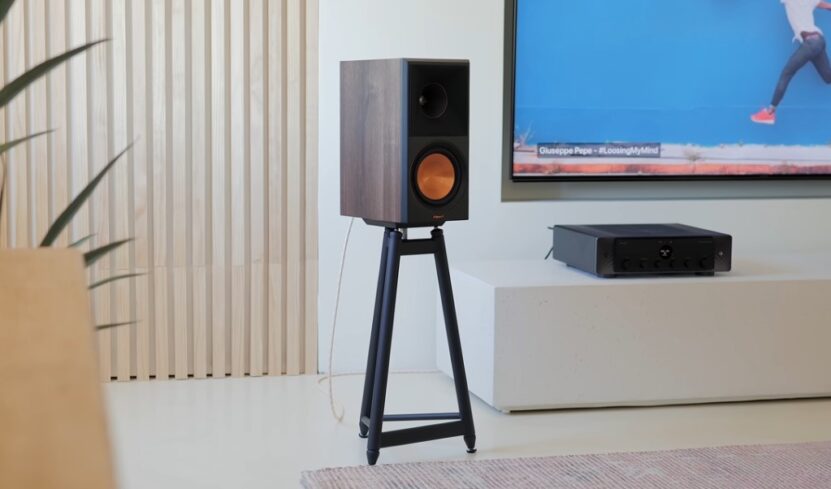
Both Klipsch and Paradigm offer a comprehensive range of products, from bookshelf and floor-standing speakers to subwoofers, soundbars, and home theater systems. Klipsch’s product range is more extensive, catering to both casual listeners and serious audiophiles. Their Heritage series, for example, pays homage to the brand’s roots with a distinct vintage charm.
Paradigm, while having a slightly narrower range, focuses on creating specialized products that cater to various needs. Their Monitor SE series, for instance, offers high-performance audio at a reasonable price point. Their top-of-the-line Persona series represents the epitome of the brand’s pursuit of sonic perfection.
Pricing and Value for Money
Price plays a crucial role in making a purchasing decision. Klipsch, with its wider product range, offers options across various price points. Their entry-level Reference series offers great value for beginners, while their high-end Heritage series caters to the discerning audiophile.
Paradigm’s products, though slightly more premium, promise high-quality sound and exceptional build quality. While you might need to shell out a bit more for a Paradigm speaker, many believe the premium is justified due to the brand’s commitment to research, innovation, and acoustic perfection.
Customer Reviews and Satisfaction
Klipsch enjoys a strong following of loyal customers who value the brand’s heritage, build quality, and lively sound. Online reviews often highlight the robust and dynamic audio performance of Klipsch speakers, with some users suggesting they’re excellent for movie and rock music lovers.
Paradigm, meanwhile, receives high praise for its precision, detail, and fidelity. Customers appreciate the brand’s commitment to delivering true-to-source audio, making these speakers a favorite among classical music enthusiasts and those who value a more analytical listening experience.
Home Theater Applications
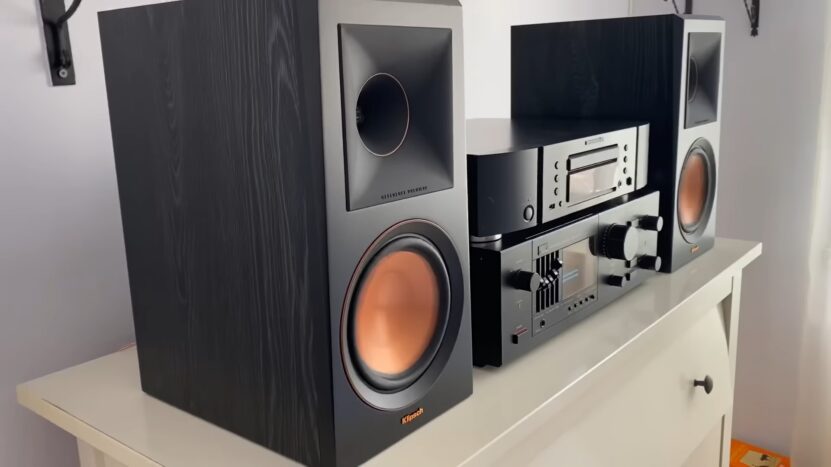
When it comes to home theater applications, Klipsch stands out with its expansive and dynamic sound. The brand’s high-efficiency, horn-loaded speakers can effortlessly fill a room with sound, creating a captivating cinematic experience.
Furthermore, Klipsch offers dedicated surround speakers and subwoofers, enabling the creation of a comprehensive and immersive home theater system.
Paradigm, too, performs admirably in home theater setups. The brand’s focus on precision and detail delivers a nuanced soundstage, capturing even the most subtle effects in movies. Combined with high-quality subwoofers and center channels, Paradigm can create a sophisticated and engaging home theater experience.
Music Listening Experience
For music lovers, Klipsch offers a vibrant and engaging listening experience. Their speakers excel at delivering the punchy lows, clear mids, and sparkling highs needed for a wide range of music genres. Whether it’s the soulful strains of a blues guitar or the pounding beats of EDM, Klipsch speakers bring music to life.
Paradigm, on the other hand, delivers a pure, uncolored musical experience. These speakers reproduce music exactly as it was recorded, providing a detailed and analytical sound that is adored by purists. If you’re a fan of classical music or jazz, Paradigm’s true-to-source reproduction might be just what you need.
Pros and Cons: Klipsch vs. Paradigm
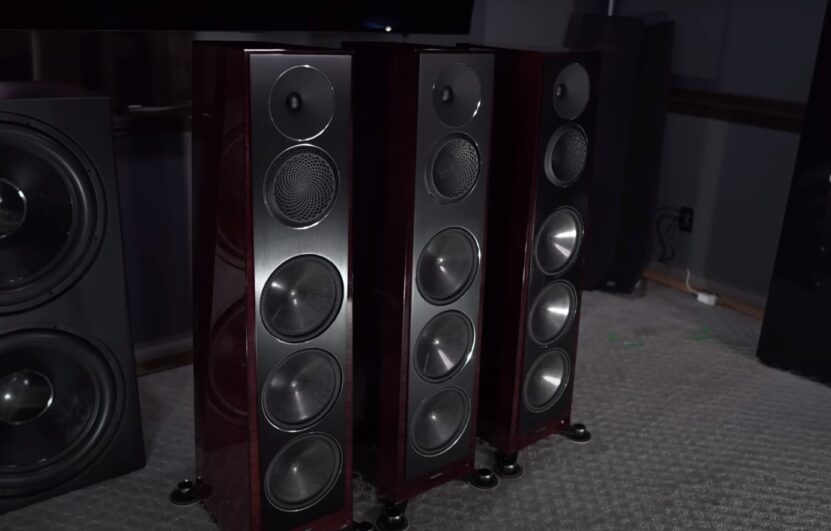
Klipsch offers dynamic, engaging sound and has a broad product range to suit varying needs and budgets. Their distinctive design adds a touch of vintage charm. On the downside, their aggressive sound signature might not appeal to everyone, especially those who prefer a more laid-back, analytical sound.
Paradigm, meanwhile, is renowned for its precise, neutral sound and elegant, modern aesthetics. Their commitment to research and innovation is commendable. However, the premium pricing and slightly narrower product range might be a deterrent for some.
Final Words
In the epic concert of Klipsch vs. Paradigm, it’s the listener who ultimately gets to conduct the orchestra. Whether it’s the vibrant and energetic performance of Klipsch or the precise and nuanced composition of Paradigm, both brands offer distinctive symphonies of sound.
While Klipsch brings forth the tradition and power of sound, Paradigm reflects the precision and innovation of modern acoustics. Your choice will depend on your personal preferences, budget, and listening needs. Whichever brand you choose, you can rest assured that both deliver on their promise of quality and performance, playing their part in the grand symphony of sound that is our world.

